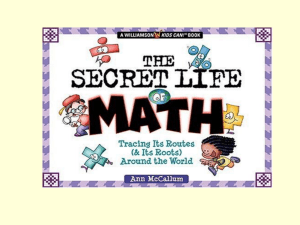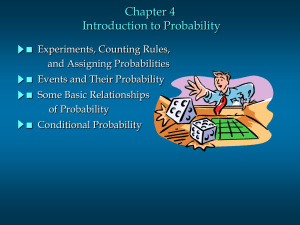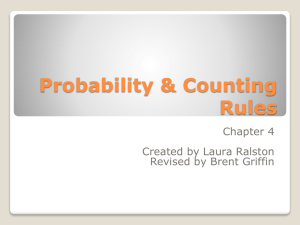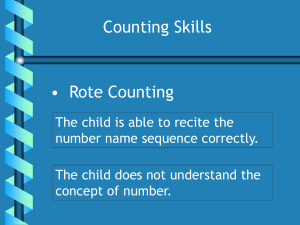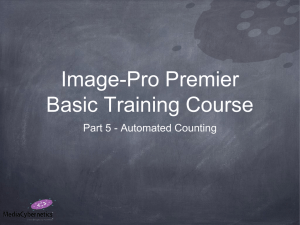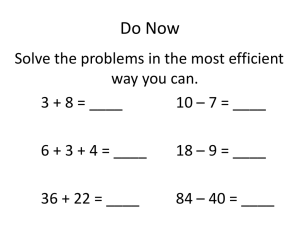N! = N(N
advertisement
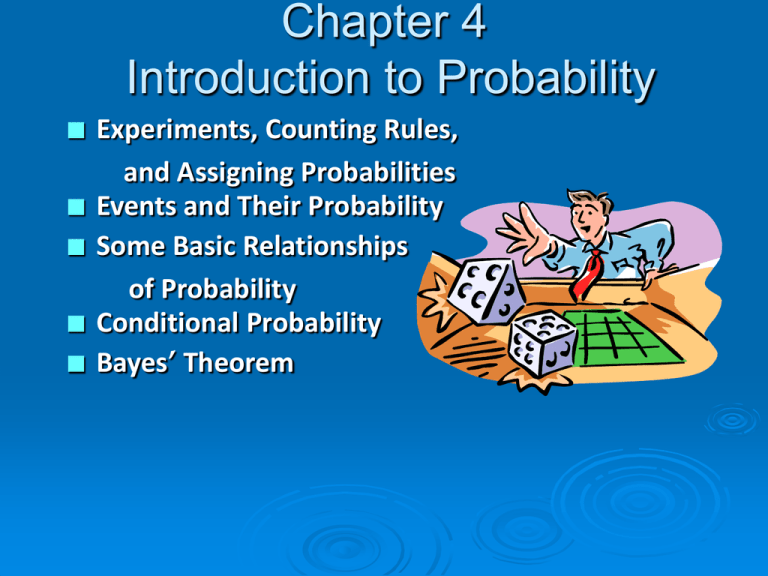
Chapter 4 Introduction to Probability Experiments, Counting Rules, and Assigning Probabilities Events and Their Probability Some Basic Relationships of Probability Conditional Probability Bayes’ Theorem Measure of the Likelihood of Occurrence Increasing Likelihood of Occurrence Probability: 0 The event is very unlikely to occur. .5 The occurrence of the event is just as likely as it is unlikely. 1 The event is almost certain to occur. 4.1 An Experiment and Its Sample Space An experiment is any process that generates well-defined outcomes. The sample space for an experiment is the set of all experimental outcomes. An experimental outcome is also called a sample point. Example: Bradley Investments Bradley has invested in two stocks, Markley Oil and Collins Mining. Bradley has determined that the possible outcomes of these investments three months from now are asLoss follows. Investment Gain or in 3 Months (in $000) Collins Mining Markley Oil 10 8 5 -2 0 -20 A Counting Rule for Multiple-Step Experiments If an experiment consists of a sequence of k steps in which there are n1 possible results for the first step, n2 possible results for the second step, and so on, then the total number of experimental outcomes is given by (n1 )( n2). . . (nk). A helpful graphical representation of a multiple-step experiment is a tree diagram. Example: A Counting Rule for Multiple-Step Experiments Bradley Investments can be viewed as a two-step experiment. It involves two Markley Oil: with a set ofn1experimental =4 stocks, each Collins Mining: n2 = 2 outcomes. Total Number of Experimental Outcomes: n1n2 = (4)(2) = 8 Tree Diagram Markley Oil (Stage 1) Collins Mining (Stage 2) Gain 8 Gain 10 Gain 8 Gain 5 Lose 2 Lose 2 Gain 8 Even Lose 20 Gain 8 Lose 2 Lose 2 Experimental Outcomes (10, 8) Gain $18,000 (10, -2) Gain $8,000 (5, 8) Gain $13,000 (5, -2) Gain $3,000 (0, 8) Gain $8,000 (0, -2) Lose $2,000 (-20, 8) Lose $12,000 (-20, -2) Lose $22,000 Counting Rule for Combinations A second useful counting rule enables us to count the number of experimental outcomes when n objects are to be Number of Combinations of N Taken n at a Time selected from a set ofObjects N objects. N Cn where: N! N n n !( N n )! N! = N(N - 1)(N - 2) . . . (2)(1) n! = n(n - 1)(n - 2) . . . (2)(1) 0! = 1 Counting Rule for Permutations A third useful counting rule enables us to count the number of experimental outcomes when n objects are to be selected from a set of N objects, where the order of selection is important. Number of Permutations of N Objects Taken n at a Time N Pn where: N! N n ! n (N n )! N! = N(N - 1)(N - 2) . . . (2)(1) n! = n(n - 1)(n - 2) . . . (2)(1) 0! = 1 Assigning Probabilities Classical Method Assigning probabilities based on the assumption of equally likely outcomes Relative Frequency Method Assigning probabilities based on experimentation or historical data Subjective Method Assigning probabilities based on judgment

